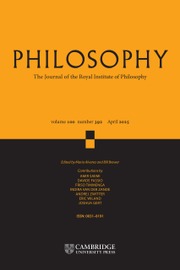No CrossRef data available.
Article contents
Abstract
Many online messages now contain emoji – these small images have quickly become an important means of communicating. Yet they have not yet been taken seriously in philosophy of language. In this exploratory paper, I attempt to remedy this neglect by analysing the communicative functions of emoji. I argue that emoji have at least three communicative functions. Firstly, they can serve a replicative function, in that they can play the same role as words and punctuation, thereby replicating the function of existing written communicative devices. Secondly, they can serve a compensatory function, in the sense that they can be used to make up for features of face-to-face conversation which are lost in written online conversation. Thirdly, they can serve supplementary functions, in that we can perform new communicative acts with emoji which we could not previously perform either in written or face-to-face communication.
- Type
- Research Article
- Information
- Philosophy , Volume 99 , Special Issue 3: The Philosophy of Online Communication , July 2024 , pp. 413 - 435
- Copyright
- Copyright © The Author(s), 2024. Published by Cambridge University Press on behalf of The Royal Institute of Philosophy



